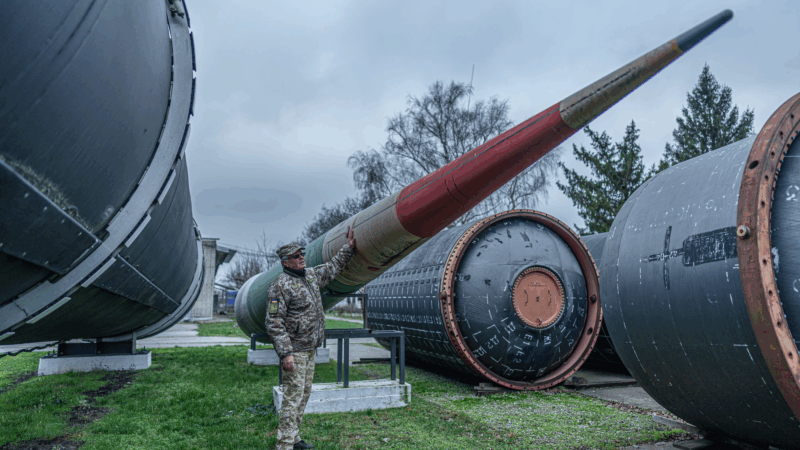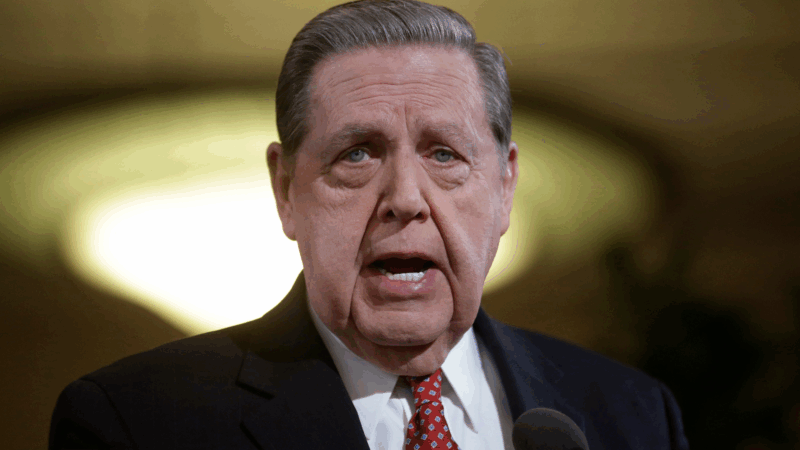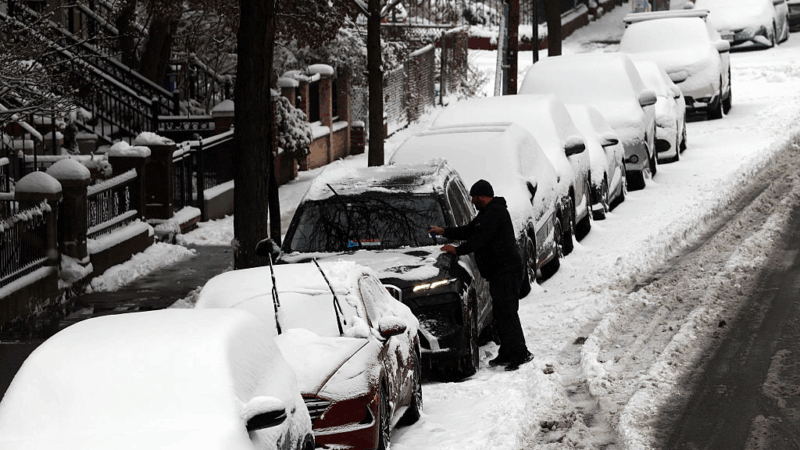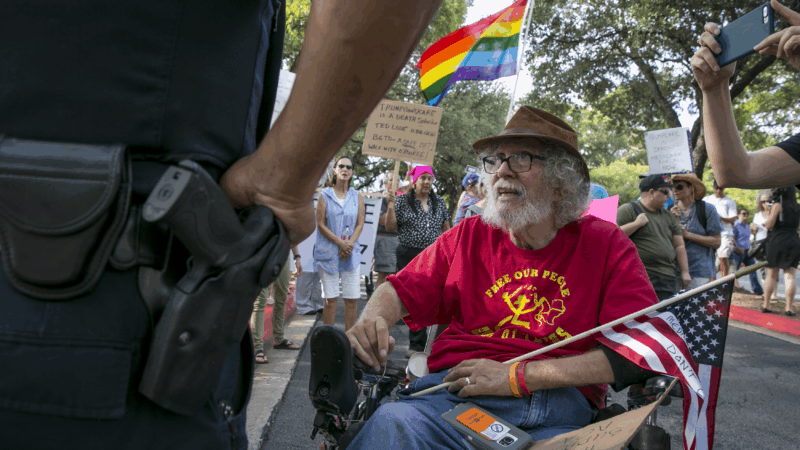Homeland Security pulls down list of ‘sanctuary’ cities and counties after backlash
The Department of Homeland Security removed a list of “sanctuary jurisdictions” days after the agency posted it on its website.
The list included dozens of cities and counties across 37 states and the District of Columbia that DHS said were in noncompliance with federal statutes.
“DHS demands that these jurisdictions immediately review and revise their policies to align with Federal immigration laws and renew their obligation to protect American citizens, not dangerous illegal aliens,” the DHS page stated.
The list, which posted late last week and came down on Sunday, was supposed to be the latest step in the Trump administration’s effort to push back against local municipalities that it believes are obstructing its goals to increase immigration-related arrests and deportations. Since the start of the administration, mayors and governors of cities seen as “sanctuary” have been called to testify in Congress and federal agencies have looked into curbing federal resources from these areas.
In practice, sanctuary jurisdictions prohibit local law enforcement from assisting federal immigration officials on immigration-related operations.
But the list quickly faced intense criticism from mayors and law enforcement confused as to why they had been included. Over the weekend, the National Sheriffs’ Association President Sheriff Kieran Donahue accused DHS of lacking transparency and accountability in how the list was compiled.
“This list was created without any input, criteria of compliance, or a mechanism for how to object to the designation. Sheriffs nationwide have no way to know what they must do or not do to avoid this arbitrary label,” Donahue said, calling on DHS to remove the list. “This decision by DHS could create a vacuum of trust that may take years to overcome.”
Local leaders across the country also raised issues with their inclusion on the list. Mayors from Boise, Idaho, and San Diego, for example, were surprised to see their cities named. Colorado leaders also raised concerns; Aurora was removed before the list was posted.
President Trump issued an executive order on April 28 that directed the department and the attorney general to publish a list of states and local jurisdictions “obstructing federal immigration law enforcement and notify each sanctuary jurisdiction of its non-compliance, providing an opportunity to correct it.”
“Some of the cities have pushed back. They think that because they don’t have one law or another on the books that they don’t qualify but they do qualify,” DHS Secretary Kristi Noem on Fox’s Sunday Morning Futures.
The list, a senior DHS official said in a statement to NPR, is constantly reviewed, can be changed at any time and will be “regularly” updated.
“Designation of a sanctuary jurisdiction is based on the evaluation of numerous factors, including self-identification as a Sanctuary Jurisdiction, noncompliance with Federal law enforcement in enforcing immigration laws, restrictions on information sharing, and legal protections for illegal aliens,” the official’s statement said.
Since taking office, the Trump administration has taken steps to retaliate against jurisdictions it considered “sanctuary.” For example, the United States Citizenship and Immigration Services ended coordination on naturalization ceremonies with “sanctuary cities that restrict the ability of law enforcement to cooperate with DHS – in defiance of the rule of law – to enforce immigration laws and keep American communities safe from illegal and violent aliens,” according to USCIS spokesman Matthew Tragesser.
The administration has vowed to review federal disaster aid and other assistance that goes to “sanctuary jurisdictions.” The withholding of funding prompted lawsuits from 16 jurisdictions. A judge blocked the move.
The administration has also taken cities to court over policies it says limit cooperation with immigration authorities.
Memory loss: As AI gobbles up chips, prices for devices may rise
Demand for memory chips currently exceeds supply and there's very little chance of that changing any time soon. More chips for AI means less available for other products such as computers and phones and that could drive up those prices too.
Brigitte Bardot, sex goddess of cinema, has died
Legendary screen siren and animal rights activist Brigitte Bardot has died at age 91. The alluring former model starred in numerous movies, often playing the highly sexualized love interest.
For Ukrainians, a nuclear missile museum is a bitter reminder of what the country gave up
The Museum of Strategic Missile Forces tells the story of how Ukraine dismantled its nuclear weapons arsenal after independence in 1991. Today many Ukrainians believe that decision to give up nukes was a mistake.
Jeffrey R. Holland, next in line to lead Church of Jesus Christ of Latter-day Saints, dies at 85
Jeffrey R. Holland led the Quorum of the Twelve Apostles, a key governing body. He was next in line to become the church's president.
Winter storm brings heavy snow and ice to busy holiday travel weekend
A powerful winter storm is impacting parts of the U.S. with major snowfall, ice, and below zero wind chills. The conditions are disrupting holiday travel and could last through next week.
Disability rights advocate Bob Kafka dead at 79
Bob Kafka was an organizer with ADAPT (American Disabled for Attendant Programs Today), a group which advocates for policy change to support people with disabilities.









